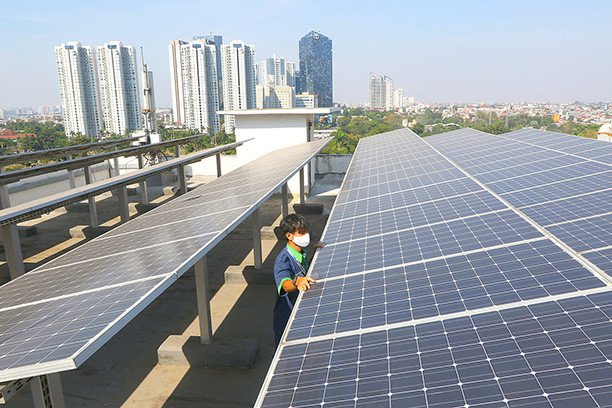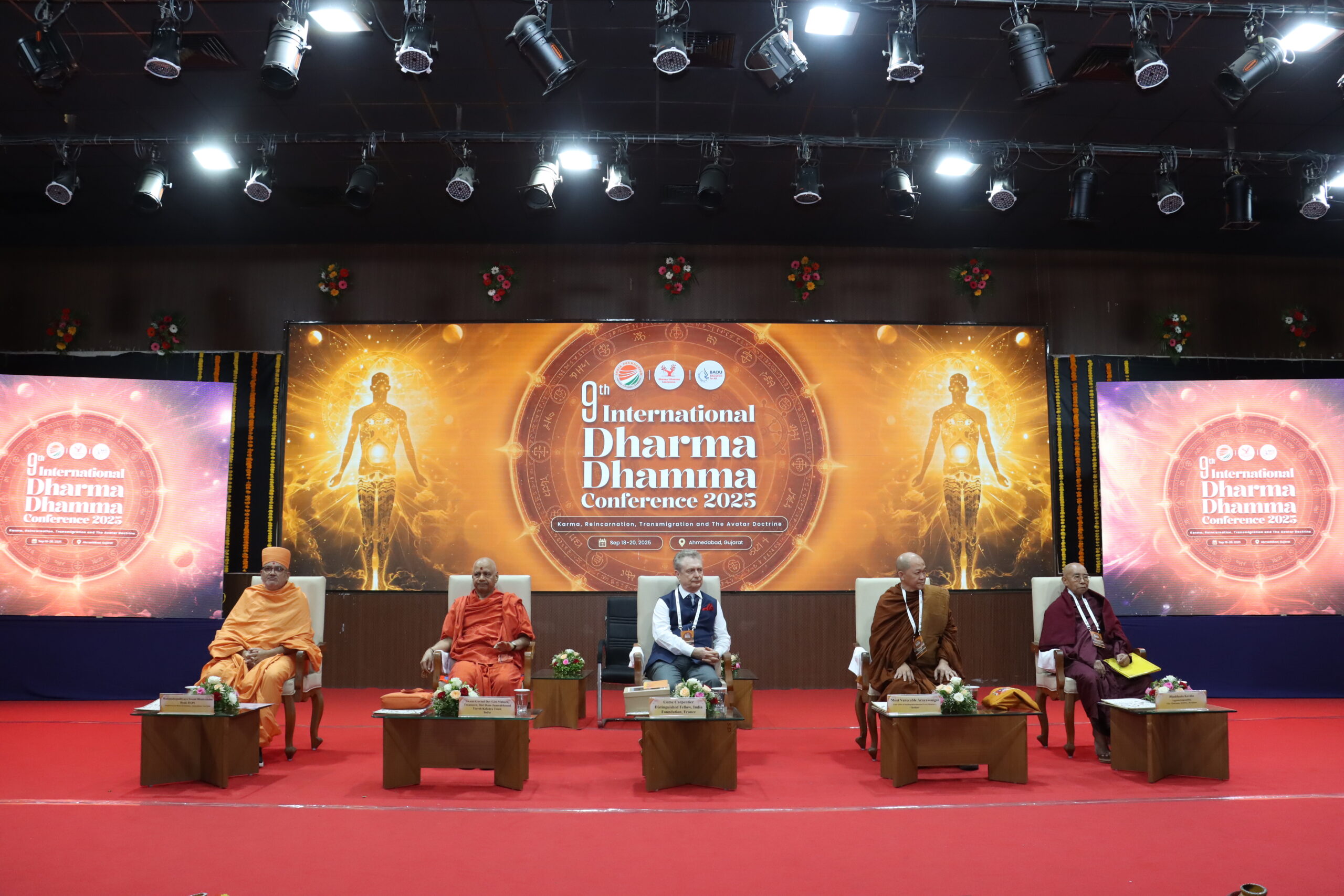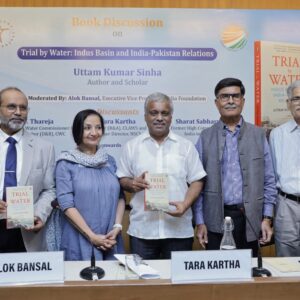- The global context of climate and energy
The latest reports from the United Nations Intergovernmental Panel on Climate Change (IPCC-2022)[1][2] leave no doubt for the global community that climate change is widespread, rapid, and intensifying[3]. The UN Secretary-General António Guterres said the IPCC Report was nothing less than “a code red for humanity. The alarm bells are deafening, and the evidence is irrefutable.”[4]
Economic shocks, disruptions in supply chains, fiscal and monetary responses triggered by the COVID-19 pandemic, and disrupted production and trade in food and energy markets due to the war in Ukraine have further aggravated the climate crisis. The renewed search for energy security and the higher energy prices of oil and gas is leading to a reversion to carbon-intensive fuels that risk reversing the gains made in the last decade on energy transition. Higher food and energy prices and higher debt distress are also sliding the world’s poor back into extreme poverty[5]. These interlinked stresses on poor and emerging economies are making it even more difficult for governments to enhance energy access, transition, and security. Simultaneously, the availability of public funds to improve their people and communities’ adaptation and resilience to climate and extreme weather events is getting scarer.
This article presents a suite of proposals for the incoming G20 Presidency of India to guide an ambitious global response on climate and energy transition during these interlinked global stresses on economies, communities, and people.
- G20’s impact on global climate efforts
All countries of the G20 grouping generate 80% of the world’s GDP, conduct 75% of world trade, and make up 60% of the global population[6]. G20 countries cause 76% of global greenhouse gas emissions[7]. Driving global economies towards a net-zero pathway will require deep cuts (~50%) in emissions throughout the G20 by 2030. Climate mitigation and adaptation actions undertaken by G20 countries will determine whether the next generations of humans will have a habitable planet or not.
At COP 26 in Glasgow in Nov 2021, the G20 countries[8] announced national long-term decarbonization pledges. Many G-20 governments have also implemented national policies and regulations to turn these pledges into actions in the last year. However, the BNEF’s G-20 Zero-Carbon Policy Scoreboard 2022 analyzed that while G-20 governments made ambitious pledges in 2021, none have implemented sufficient policies to plausibly achieve deep decarbonization, though some are closer than others.[9] This leaves an important and urgent role for all G20 countries to lead by example and implement policies and regulations to drive the mitigation and adaptation measures for effective global climate change response.
The current G20 Presidency, Indonesia[10], and the previous Italian Presidency[11] have made substantial efforts to move the energy transition[12] and climate agendas under the Sherpa Track. The agreements on enhancing climate action struck under the G20, like the directional shift of “Climate Action by ALL” in the declaration of the 2014 G-20 Summit[13] in Australia, have also found their way into and guided inter-governmental negotiations on critical geopolitical issues under the UNFCCC COP in Paris in 2015[14]. Given the emissions profile of G20 countries and the impact of the actions undertaken on the global economy, the agreements struck on climate and energy transition agendas under the G20 processes have a significant bearing on the worldwide response to climate change and energy transition.
3. India’s leadership on global climate and energy transition issues
a). Climate and energy transition pledges
At Glasgow COP in 2021, the Hon’ble Prime Minister of India presented five nectar elements, ‘Panchamrit’[15], to deal with the climate challenge. These included:
I) Take non-fossil energy capacity to 500 GW by 2030.
II) Meet 50 per cent of its energy requirements from renewable energy by 2030.
III) Reduce the projected carbon emissions by one billion from now till 2030.
IV) By 2030, reduce the carbon intensity of its economy by more than 45 per cent.
V) By the year 2070, achieve the target of Net Zero.
In line with the PM’s statement in Glasgow, the Indian Union Cabinet, on 3rd Aug 2022, approved India’s Updated Nationally Determined Contribution[16]. This update to India’s existing NDC translates the ‘Panchamrit’ announced at COP 26 into enhanced climate targets. The update is also a step towards achieving India’s long-term goal of reaching net zero by 2070.[17]
b). Recognition of ongoing domestic climate and energy transition actions
The IEA report, “India 2020- Energy Policy Review[18]” congratulated,[19] the Indian government on its outstanding achievements in extending citizens’ access to electricity, affordable, efficient lighting, and clean cooking in record time through historic schemes like SAUBHAGYA[20], UJALA[21] and UJJWALA[22]. The Report recognized efforts by the Indian Govt to pursue energy market reforms and facilitating the swift deployment of renewable technologies. The Report also highlighted the strong growth of renewables in India, which now account for almost 23% of the country’s total installed capacity. The review also found that energy efficiency improvements in India avoided 15% of additional energy demand, oil and gas import, air pollution, and 300 million tonnes of CO2 emissions between 2000 and 2018.
India was the most attractive emerging market for clean power investment in 2021[23]. India has also consistently ranked among the top ten emerging markets covered by Climatescope[24], BNEF’s flagship report analyzing market attractiveness for energy transition investment. All these efforts and the climate mitigation and energy transition impacts solidify India’s credibility to lay out an ambitious G20 agenda on these issues.
c) International climate leadership
Building on her domestic action and credibility, India has emerged as a global leader on climate and energy transition action. Under the leadership of the Hon’ble PM of India, the Government of India has also launched two global climate change response initiatives.
I). International Solar Alliance:
The International Solar Alliance (ISA)[25], launched at the UNFCCC COP in Paris in 2015, aims to address issues related to climate mitigation by managing energy access, security, and transition with solar projects. The ISA now has 110 member countries with nine active programmes[26] promoting 10 GW of off-grid and grid-connected solar projects in developing countries to promote energy access and transition. The ISA has an ambitious global agenda to help mobilize USD one trillion in solar investments for enhancing energy security, access, and transition.
II). Coalition for Disaster Resilient Infrastructure
On the adaptation and resilience front, the Government of India has launched the Coalition for Disaster Resilient Infrastructure (CDRI)[27]. The CDRI brings together nations, multilateral agencies and public and private partners to address issues of infrastructure resilience more systematically and comprehensively.
Both these global initiatives strive for a new model of South-South cooperation and exchange of experience and knowledge of new development paradigms as developing nations mitigate and adapt to climate change while addressing their development imperatives, like poverty alleviation, food security, and economic growth. India has also played a leadership role in various UN Summits related to climate and energy, like the India and Sweden co-leading Industry Transition track[28], and has committed to progressively enhance climate action in various plurilateral and bilateral agreements with major countries and economic blocks like India-US[29], and India-EU climate agreements[30].
- India’s G20 Presidency
Following the 75th year of her independence, India will host G20 in 2023. It would be a historic opportunity for India to advance her national interest and showcase her prowess as a global leader. Overall, India’s G20 theme could be centred around combining the elements of self-reliance and economic growth in a sustainable and climate-responsive manner. India’s Presidency could usher in a new model of global cooperation, “Atmanirbharta/self-reliance in a globalized world for sustainable development”. India could also position this new framework that would serve not just the G20 members but for the benefit of all developing countries.
With the troika of Indonesia (2022), India (2023), and Brazil (2024), the three developing countries, the Indian G20 Presidency offers a unique moment to strengthen the issues that matter more to developing countries in the global response to climate and energy transition. The author notes that there would be a continuation and path dependency of the various ministerial and working groups related to the environment, climate, energy, and sustainable financing of 2021[31] and 2022[32] G20 Presidencies. Still, each Presidency has the flexibility to guide the discussions and set the agenda.
The author proposes below a suite of concrete proposals which could be launched during India’s Presidency to strengthen India’s climate leadership through decisive domestic action and to initiate new global actions for enhancing global energy access, security and transition.
a). Energy and climate agenda setting for the Presidency
In a recent article, India’s G20 Sherpa has outlined India’s priorities as it concerns the environment, climate, and energy and, “The concept of LiFE,[33] Prime Minister Narendra Modi introduced during the 26th United Nations Climate Change Conference of Parties (COP26) in Glasgow, 2021. A global initiative ‘Lifestyle for the Environment-LiFE Movement’ was launched on World Environment Day[34]. India hopes to highlight LiFE as a critical focus area for discussion and action during our Presidency.”[35][36]
India has championed the cause of developing countries in UN climate negotiations. India has been an avid supporter of the principle of “common but differentiated responsibilities”, asking developed countries to pay for climate finance and undertake a large share of mitigation actions. While the underlying historical context of climate change hasn’t changed, the contemporary geopolitical rivalries among major powers have sharpened considerably. The US-China (the two largest global emitters of greenhouse gases) dialogue on climate is stalled due to the Taiwan issue[37]. Europeans and other developed countries are shunning Russian oil and gas[38] in response to the Ukraine-Russia war and are securing carbon-intensive fuels, including restarting coal plants, to maintain energy security. Additionally, with deep aid cuts in G20 OECD countries, support for energy access and climate finance risks are being sidelined.
In this fast-changing geopolitical context, the Indian Presidency may consider shifting gears from the “power of the principle” to the “principle of power”. India could forge a new framework for driving climate action and energy transition while addressing energy security concerns of her own and other G20 countries. For developing countries, India could broker a broader deal that facilitates technological and financial support for countries to drive the energy transition and energy access agendas in times when nations are preoccupied with energy security concerns.
b). Initiatives for Enhancing Energy Security and Transition
For agenda-setting purposes, the Presidency should reinforce principles of equity, justness, and citizen centrality to the global discourse on energy transition. It is imperative to ground the discussion on energy transition in the developmental imperatives of developing countries.
The Presidency could shape the energy security agenda so that countries broaden the energy transition discussion from the current exclusive focus on the transition away from coal to a comprehensive discussion on the shift away from all fossil fuels in a systematic and time-bound manner to cleaner energy fuels. Cooperative arrangements for enhancing investments in large-scale battery and pumped hydro storage, green hydrogen fuels and green ammonia, and cross-border trade in green electricity could also be forged to strengthen energy security and energy transition concerns simultaneously.
The Presidency could work with MDBs, DFI and Rating agencies to propose a new framework for measuring energy transition efforts for rating countries and public and private institutions raising funds from global markets. This would bring a broader perspective on the comprehensive energy transition efforts of governments and institutions rather than the current focus on coal transition or penalizing countries and companies for their coal or high-carbon energy assets and not recognizing the overall energy transition efforts of these sovereign and private actors.
Global energy transition could be expedited through a robust global push for pumped hydro storage and utility-scale battery storage technologies. With the increasing shares of green energy sources, cross-border green electricity trading has also become more relevant for the energy transition[39].
I). Coalition for scaling-up storage technologies
The UN Secretary-General has also called[40] for a global coalition on battery storage to fast-track innovation and deployment — a Coalition led and driven by Governments, bringing together tech companies, manufacturers, and financiers. The Presidency can bring together a Coalition of like-minded governments, tech companies, manufacturers, and financiers to scale up the battery and pumped storage technologies and projects. The Energy Storage Partnership[41] initiative at the World Bank can be a supportive institution to build and strengthen such a global coalition.
II). Regional interconnections and green electricity trading
By trading energy from the sun, wind, and water across borders, countries can deliver more than enough clean energy to meet the needs of everyone on earth. This trading is already beginning to happen through discrete bilateral and regional arrangements. But to meet the sheer scale of the challenge, these efforts need to be combined and supplemented to create a more interconnected global grid. To realize the One Sun, One World One Grid vision, Hon’ble PM Modi and Hon’ble PM Johnson launched the One Sun One World One Grid-Green Grids Initiative[42] at COP 26 in Glasgow. More than 80 countries endorsed the One Sun Declaration[43] for the launch of the initiative. [44] The Ministry of New and Renewable Energy, the Government of India, with the support of the ISA[45] and the World Bank Group, has commissioned a technical study to assess the techno-commercial viability of global vision and explore 2-3 pilot projects to the East and the West of India for green electricity trading[46].
Connecting the United Arab Emirates (UAE) to the West coast of India[47] through undersea high-voltage direct current (HVDC) cables and transferring green energy produced by solar in both countries could be the first such game-changing energy transition project for realizing the global network of interconnected grid vision[48]. The UAE will host UN Climate Change COP 28 in 2023[49]. It is noted that India has invited the UAE to become part of its G20 Presidency as a guest country[50]. This provides the Indian Presidency with a unique opportunity to partner with UAE and launches regional electricity interconnection projects. India power and infra majors like Sterlite Power[51], Adani Infra and others, along with UAE investments, can play a leading role in such a regional project. The proposed initiative can be anchored under the Comprehensive Economic Partnership Agreement (CEPA) between India and the UAE.[52]
c). Initiative for Enhancing Global Energy Access
As per the Tracking SDG 7 Report of 2022, the recent progress in universal access to electricity was mixed[53]. There were still 733 million people without access to electricity in 2020[54]. Among people without access to electricity, 77 per cent—about 568 million people—lived in Sub-Saharan Africa in 2020. Meeting the 2030 target requires increasing the number of new connections to 100 million a year.[55]
In the past few years, the Indian Government has made full electrification of its people possible through “Saubhagya” and other central and state-level initiatives. Lessons learned through these policy measures, including using off-grid solar solutions, can be instructive as the Presidency supports the energy access agenda for developing countries. This would be of invaluable support for the acute energy access needs of the Least Developed Countries. The partnership with ISA under the leadership of India at the G20 to help Africa would significantly impact the Region’s path to renewable energy.
A recent report by the World Bank has analyzed that solar mini-grids can provide electricity to nearly 500 million people in Africa and be the least-cost solution to close the energy access gap by 2030.[56] The Indian Presidency, through the ISA platform, could offer a new financial instrument for making substantial progress in energy access through mini-gird and off-grid solar projects. Hon’ble PM Modi announced[57] USD 1.4 billion in concessional financing for solar projects in ISA member countries. The uptake of these concessional funds has been slow due to COVID and the high-debt distress and political situations in the sub-Saharan African countries.
Under the leadership of India’s G20 Presidency, a risk guarantee and insurance facility by the ISA[58] and Multilateral Investment Guarantee Agency (MIGA)[59] of the World Bank Group can be launched in partnership with interested countries from the Africa Region to provide the necessary risk coverage for public and private investments to flow for solar projects to enhance energy access. The proposed Facility can mitigate the credit and default risks and unlock the public and private funding, including the unlocking the funds pledged in 2018 at the ISA founding ceremony. Indian solar manufacturers benefiting from the Production-linked Incentive (PLI) scheme[60] of the Government of India may also find new markets for solar products in Africa. It is noted that India also holds the ISA Presidency. Grant funding from global climate and energy foundations like Global Energy Alliance for People and Planet[61], could be secured to capitalize on the risk guarantee and insurance facility.
d). Climate and sustainable financing agenda
For a long time, the global climate finance discussion under the UNFCCC format has been centred on the delivery of the Copenhagen promise by developed countries for collectively mobilizing USD 100 billion for supporting climate action in developing countries[62]. In the global economy, green financing has grown into hundreds of billions of dollars per year[63]. In the real economy, investors invest with financial risk and return parameters and do not pay a special premium for climate benefits. However, in the last few years, new investment frameworks are currently being operationalized to internalize climate and ESG risks into investment decisions[64].
The Indian Presidency may like to propose a new framework for climate finance by introducing a principle of climate-adjusted returns. This principle will entail discounting return expectations by specific percentage points if the investment brings climate return regarding mitigation and adaptation benefits. Or conversely, putting a financial premium on climate returns in investments’ decision-making or cheaper interest rates for climate-friendly projects. A recent proposal[65] for the provision of deeply concessional financing for climate action by MDBs, submitted at the 2022 Annual Meetings of the World Bank and International Monetary Fund by the G7 Presidency, Germany, may be worth examining in this regard. This principle would be of great value in simplifying the climate finance debate and help global efforts for scaling-up investments for addressing climate change, adaptation, and resilience activities.
For mobilizing larger pools of investments for global climate actions, the Indian Presidency can promote the use of blended finance instruments where the donor and concessional capital can be effectively utilized for mitigating risks for large-scale commercial investments from asset owners and pension funds[66]. G20 countries would consider new blended finance facilities and innovative risk mitigation instruments for scaling-up investments in large-scale battery storage and hydrogen projects in partnership with MDBs and global climate funds like the Climate Investment Funds[67] and the Green Climate Fund[68].
e). Strengthening domestic Climate action
To meet India’s 2030 and the long-term trajectory towards a net-zero future by 2070 would require ‘whole of economy planning’ and strengthening execution capacities at all levels of the central and state governments. It is critical that other stakeholders, like the private sector, non-governmental organizations, and citizen groups, participate actively in such planning and execution processes. A robust institutional structure to guide the thinking and planning process for climate transition would provide a clear signal to public and private actors for making long-term investment decisions in critical sectors of the economy. In this regard, the Indian Presidency could also establish a comprehensive national institutional framework to guide medium to long-term policy changes for meeting net-zero targets.
In 2014, the Government re-constituted the Prime Minister’s Council on Climate Change to coordinate National Action for Assessment, Adaptation and Mitigation of Climate Change[69]. The Council may have served its purpose and need an upgrade in its mandate. India could use the G20 Presidency period to lead by example for other G20 nations and launch a ‘Climate Transition National Mission’ and constitute a ‘Climate Transition Commission’ to drive a ‘whole of government’ thinking towards climate transition. The Mission and the Commission could be established along the lines of the Mission Karamyogi[70] and the Capacity Building Commission[71]. The Commission could have members from both govt and private sectors.
- Sherpa Track format
Indian Presidency could explore a new format for structuring sectoral themes and meetings. Sectoral Ministerial and Working group discussions and meetings/visits can be planned to showcase the potential of the Indian industry/sectors leading strong climate and energy transition actions. Sectoral and industry champions can be identified and tasked with building these themes in close collaboration with line Ministries, corporates, and other stakeholders. Examples of such champions could be assigning Mr Anand Mahindra for EV mobility; Mr. K V Kamath for Sustainable Finance; Mr. Gautam Adani for Renewable Energy, and others.
Substantive support, including staff secondments, from WB, IMF and other IOs like IEA, IRENA and ISA can be mobilized to support the Presidency and G20 working groups. Active participation of Indian institutions to substantively contribute to agenda discussions need to be encouraged.
- Conclusion
The G20 Presidency offers India a unique and historic opportunity to display her transformation developmental experience and growth opportunities for a climate-responsive and sustainable world. The Presidency could drive the climate and energy transition agenda by instituting bold domestic and global initiatives that are concrete and bring real change on the ground.
Author Brief Bio: Jagjeet Singh Sareen is a Senior Policy Officer at the World Bank. He served as the Assistant Director-General of the International Solar Alliance on secondment from the World Bank. He is also an esteemed member of the India Foundation Journal Editorial Board. The opinions expressed in this article are those of the author and do not reflect the views of the World Bank and International Solar Alliance.
References:
[1]https://www.ipcc.ch/report/ar6/wg3/downloads/report/IPCC_AR6_WGIII_SPM.pdf
[2] https://www.ipcc.ch/report/ar6/wg2/
[3] https://www.ipcc.ch/2021/08/09/ar6-wg1-20210809-pr/
[4]https://press.un.org/en/2021/sgsm20847.doc.htm#:~:text=Today’s%20IPCC%20Working%20Group%201,of%20people%20at%20immediate%20risk.
[5] https://www.devcommittee.org/sites/dc/files/download/Statements/2022-10/DC-S2022%200069%20DC%20Chair%20for%20AM%20Fall%20statement.pdf
[6]https://mea.gov.in/Portal/ForeignRelation/G20_Brief_for_website_-_27.10__1___1_.pdf
[7] https://eciu.net/analysis/briefings/international-perspectives/g20-meetings-climate-pledges
[8] https://unfccc.int/cop26/world-leaders-summit
[9] ttps://assets.bbhub.io/professional/sites/24/BNEF-G20-Zero-Carbon-Policy-Scoreboard-Executive-Summary.pdf
[10] https://g20.org/wp-content/uploads/2022/09/G20-Bali-COMPACT_FINAL_Cover.pdf
[11] http://www.g20.utoronto.ca/2021/210723-climate-energy.html
[12] http://www.g20.utoronto.ca/2022/Bali-Energy-Transitions-Roadmap_FINAL_Cover.pdf
[13] http://www.g20.utoronto.ca/2014/2014-1116-communique.html
[14] https://icwa.in/pdfs/G20@2023TwoEassyweb.pdf
[15] https://www.mea.gov.in/Speeches-Statements.htm?dtl/34466/National+Statement+by+Prime+Minister+Shri+Narendra+Modi+at+COP26+Summit+in+Glasgow
[16]https://pib.gov.in/PressReleaseIframePage.aspx?PRID=1847812#:~:text=The%20Union%20Cabinet%20chaired%20by,on%20Climate%20Change%20(UNFCCC).
[17]https://pib.gov.in/PressReleaseIframePage.aspx?PRID=1847812#:~:text=As%20per%20the%20updated%20NDC,based%20energy%20resources%20by%202030.
[18] https://iea.blob.core.windows.net/assets/2571ae38-c895-430e-8b62-bc19019c6807/India_2020_Energy_Policy_Review.pdf
[19] https://www.iea.org/news/iea-launches-first-in-depth-review-of-indias-energy-policies
[20] https://powermin.gov.in/en/content/saubhagya
[21] https://eeslindia.org/en/ourujala/
[22] https://www.pmuy.gov.in/index.aspx
[23] https://global-climatescope.org/markets/in/
[24] https://global-climatescope.org/
[25] https://isolaralliance.org/
[26] https://isolaralliance.org/work/scaling-solar-application-agricultural-use
[27] https://www.cdri.world/
[28] https://pib.gov.in/Pressreleaseshare.aspx?PRID=1830145
[29] India-U.S. Climate and Clean Energy Agenda 2030 partnership launched at the Leaders’ Summit on Climate in April 2021. https://mea.gov.in/bilateral-documents.htm?dtl/33821/IndiaUS+Joint+Statement+on+Launching+the+IndiaUS+Climate+and+Clean+Energy+Agenda+2030+Partnership
[30] EU-India Clean Energy and Climate Partnership. https://www.cecp-eu.in/
[31] http://www.g20.utoronto.ca/2021/2021_G20-Energy-Climate-joint-Ministerial-Communique.pdf
[32] https://g20.org/wp-content/uploads/2022/09/G20-Bali-COMPACT_FINAL_Cover.pdf
[33] https://www.mea.gov.in/Speeches-Statements.htm?dtl/34466/National+Statement+by+Prime+Minister+Shri+Narendra+Modi+at+COP26+Summit+in+Glasgow
[34] https://newsonair.gov.in/News?title=PM-to-launch-global-initiative-%E2%80%98Lifestyle-for-Environment-(LiFE)-Movement-on-Sunday&id=442124#:~:text=The%20idea%20of%20LiFE%20was,of%20mindless%20and%20destructive%20consumption.
[35] https://www.theweek.in/columns/amitabh-kant/2022/09/05/india-taking-over-presidency-of-g20-this-year-what-it-means.html
[36] https://www.indiatoday.in/india/story/mission-life-fighting-climate-crisis-pm-modi-gujarat-antonio-guterres-2287593-2022-10-20
[37] https://www.straitstimes.com/asia/east-asia/beijing-halts-climate-military-talks-with-us-suspends-other-cooperation
[38]https://ec.europa.eu/commission/presscorner/detail/en/ip_22_5989
[39] https://iea.blob.core.windows.net/assets/d9381c64-bbe8-4855-812c-e5e3d3f50dbf/Integrating_Power_Systems_across_Borders.pdf
[40] https://press.un.org/en/2022/sgsm21284.doc.htm
[41] https://www.esmap.org/the_energy_storage_partnership_esp
[42] https://isolaralliance.org/work/osowog/
[43]https://assets.publishing.service.gov.uk/government/uploads/system/uploads/attachment_data/file/1031767/One_Sun_Declaration__Glasgow_2_November_2021__2_.pdf
[44]https://timesofindia.indiatimes.com/india/one-sun-one-world-one-grid-india-uks-ambitious-global-solar-grid-plan-explained/articleshow/87502775.cms
[45] https://www.gccbusinessnews.com/global-solar-power-grid-uae-international-solar-alliance-to-begin-study/
[46] https://isolaralliance.org/work/osowog/
[47]https://energy.economictimes.indiatimes.com/news/renewable/uae-india-discuss-economic-opportunities-of-energy-transition/91845592
[48]https://www.newindianexpress.com/business/2020/oct/21/india-to-link-power-grid-with-middle-east-seato-export-excess-electricity-2213041.html
[49] https://sdg.iisd.org/events/2022-un-climate-change-conference-unfccc-cop-28/
[50] https://www.mea.gov.in/press-releases.htm?dtl/35700/Indias_forthcoming_G20_Presidency
[51] https://www.linkedin.com/posts/pratik-agarwal-b6278b2_onesunoneworldonegrid-osowog-dubaiexpo2020-activity-6851854978701656064-w52B/?trk=public_profile_like_view&originalSubdomain=in
[52]https://commerce.gov.in/international-trade/trade-agreements/comprehensive-economic-partnership-agreement-between-the-government-of-the-republic-of-india-and-the-government-of-the-united-arab-emirates-uae/
[53] https://trackingsdg7.esmap.org/data/files/download-documents/sdg7-report2022-executive_summary.pdf
[54] https://trackingsdg7.esmap.org/
[55]https://trackingsdg7.esmap.org/data/files/download-documents/sdg7-report2022-full_report.pdf
[56] https://www.worldbank.org/en/news/press-release/2022/09/27/solar-mini-grids-could-power-half-a-billion-people-by-2030-if-action-is-taken-now
[57] https://mea.gov.in/Speeches-Statements.htm?dtl/29602
[58] https://www.thehindu.com/news/national/international-solar-alliance-approves-funding-facility/article66027039.ece
[59] https://www.miga.org/environmental-social-sustainability
[60] https://economictimes.indiatimes.com/industry/renewables/govt-to-enhance-funding-under-pli-for-solar-manufacturing-to-rs-24000-cr-says-r-k-singh/articleshow/87695133.cms?from=mdr
[61] https://www.rockefellerfoundation.org/news/historic-alliance-launches-at-cop26-to-accelerate-renewable-energy-climate-solutions-and-jobs/
[62] https://unfccc.int/topics/climate-finance/the-big-picture/climate-finance-in-the-negotiations
[63] https://www.climatepolicyinitiative.org/publication/global-landscape-of-climate-finance-2021/
[64] https://www.cfainstitute.org/en/research/esg-investing
[65] https://www.bmz.de/de/aktuelles/aktuelle-meldungen/schulze-weltbank-jahrestagung-2022-125250
[66] https://www.blackrock.com/institutions/en-us/strategies/alternatives/real-assets/infrastructure/climate-finance-partnership
[67] https://www.cif.org/about-cif
[68] https://www.greenclimate.fund/
[69] https://pib.gov.in/newsite/printrelease.aspx?relid=111090
[70] https://dopttrg.nic.in/igotmk/
[71] https://cbc.gov.in/




